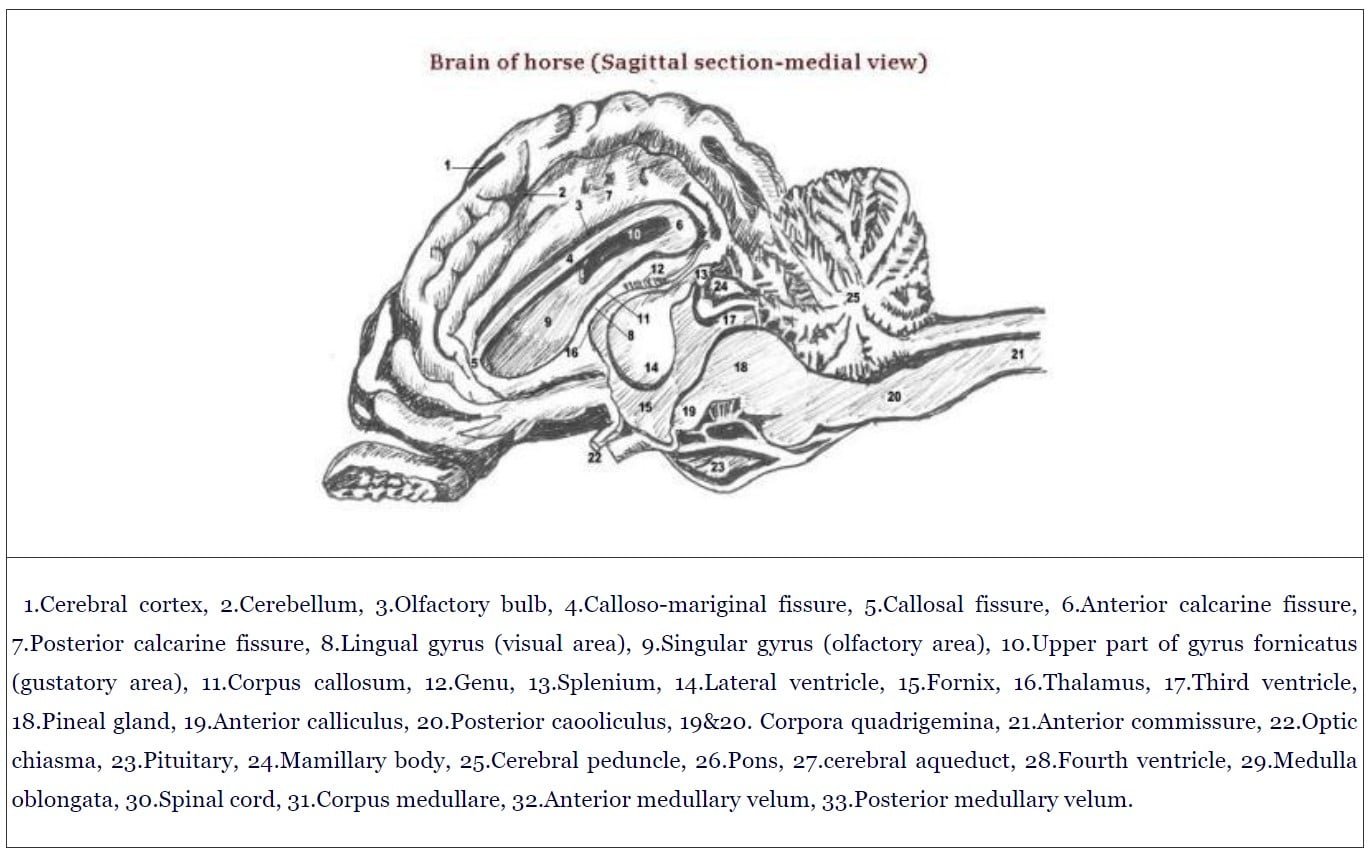Interbrain-thalamus is a large ovoid mass of gray mater situated obliquely across the dorsal face of cerebral peduncles, so that the two bodies meet in front at a right angle.
- Medially they are fused to large extent and around this area of adhesion is an annular space called the third ventricle.
- The dorsal face of the thalamus is convex and is separated from the overlying hippocampus by the tela chorioidea. Laterally it is separated from the caudate nucleus by a band of white mater called the stria semicircularis.
- The posterior part of the thalamus is in the form of a rounded ridge continues laterally with the optic tract called the lateral geniculate body which is blended with it. Behind the point of emergence of the optic tract, in the angle between the thalamus and the cerebral peduncle is the medial geniculate body.
- Thalamus receives all afferents from medial lemniscus (proprioceptive and tactile), spinal lemniscus (pain and temperature), trigeminal lemniscus (all exteroceptive sensations from the trigeminal area) and mammillo-thalamic (olfactory) tracts.
- The lateral and medial geniculate bodies receive the visual and auditory impulses respectively. All these are correlated and integrated and are then relayed to the respective cortical areas.


